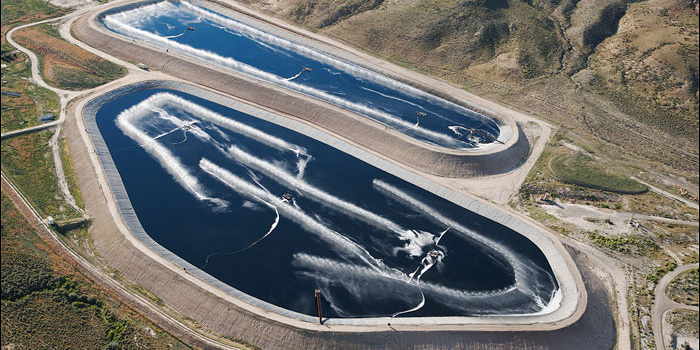Unconventional oil and gas production and depleting reservoirs in mature basins have pushed up produced water volumes worldwide.
While estimates vary, the volume of water pumped out of wells — most of it formation water already present in the reservoir or fluid injected for enhanced oil recovery — could be as high as 250 million barrels per day and growing, according to the UK consultancy NEL.
As a result, E&P companies “have effectively become water management firms”, says ProSep chief technology officer John Sabey. “In many cases, they’re producing a lot more water than oil.”
Produced water may be processed for re-use, reinjection or discharge.
The reservoir water normally contains some mix of inorganic salts, oil, dissolved gases, solid particles, bacteria, and chemicals injected for enhanced recovery.
The water composition and its intended use determine the configuration, but a typical produced water treatment chain consists of primary oil and water separation, secondary gas flotation to further separate oil from water, and a tertiary filtration stage to remove solids. Flow rate dictates the size and amount of the equipment.
With plenty of space to work with onshore, operators use large equipment such as coalescing plate separators, induced gas flotation units and multi-media filtration systems to treat produced water.
Offshore, where space and weight requirements can be tight, the treatment chain usually involves hydrocyclones, which remove the bulk of the oil from the water, followed by compact flotation units and filtration systems.
Hydrocyclones have been used in the North Sea for decades, but are relatively new to the Gulf of Mexico.
Hydrocyclones have been used in the North Sea for decades, but are relatively new to the Gulf of Mexico.
“As production migrated into deeper waters and to floating production, the technology had to change,” Sabey says.
Systems installed on floating production units must be designed to cope with the additional challenge of wave motion, explains Remko Westra, product manager for FMC Technologies’ separation systems business.
Certain technologies must be adapted for use on FPSOs, “for example, large separators and degasser vessels, which are affected by wave motion and must be designed to mitigate that motion”, he says.
“Other components like hydrocyclones are not influenced by motion. They have limits, though, so we have to look at other technologies.”
As reservoirs are depleted, operators may see water cuts increase to levels far beyond what an existing treatment system was designed to handle, says Mark Wolf, a board member for the Produced Water Society and product line manager for process equipment at NOV.
This can leave operators in a position of having to bolt on additional produced water treatment capacity.
Recent technology development has produced a number of compact “in-line” technologies for gas-liquid separation, oil-water separation and sand removal.
The equipment has proved useful in retrofit projects, where production systems must be updated to deal with changing fluid characteristics.
“We are developing some ideas in-house that look at facilities with bottlenecks, when more water is coming up and existing production facilities are stretched to the limits,” says Paul Verbeek, FMC Technology’s technology manager in the separations systems division.
New thinking Produced water has garnered more attention in recent years, amid tighter environmental regulations for discharged water and an increasing emphasis on enhanced oil recovery.
The trend should continue as more floating production units are deployed in heavy oil fields that require artificial lift, says Jeroen Bergman, product manager for separation technologies at Frames. The company recently delivered a produced water treatment system to Bumi Armada for the floating production, storage and offloading vessel bound for EnQuest’s Kraken project in the UK North Sea.
The $6 billion heavy oil development is targeting first production in 2017, with anticipated oil output of about 50,000 barrels per day.
The associated produced water, about 450,000 bpd, will be channelled to a treatment system consisting of four skids weighing a total of 420 tonnes. A portion of the treated water will be re-injected under the oil layer in the reservoir, and the rest used to power the hydraulic submersible pumps that will provide artificial lift.
“The challenge we faced was indeed a heavy oil application, which we see could be a trend in the future,” Bergman says.
“The easy oilfields have been produced. So we see an increasing number of inquiries into this type of fluid — in this case, very heavy oil, and also oil containing solids.”
In projects where produced water is to be discharged, operators tend to seek the least costly treatment option to process fluids that do not generate revenue, he says. “In this case, however, the produced water is an essential part of the production. We are actually pushing the oil by reinjection and lifting the oil by means of the HSP,” says Bergman.
Many experts in the field welcome a more favourable attitude toward produced water.
“The oil industry needs to cherish water more,” says Water Standard chief technology officer Lisa Henthorne. “They need to value it and respect it. It’s not just a waste product. It’s a resource that makes it possible to produce that oil.”

 石油圈
石油圈
